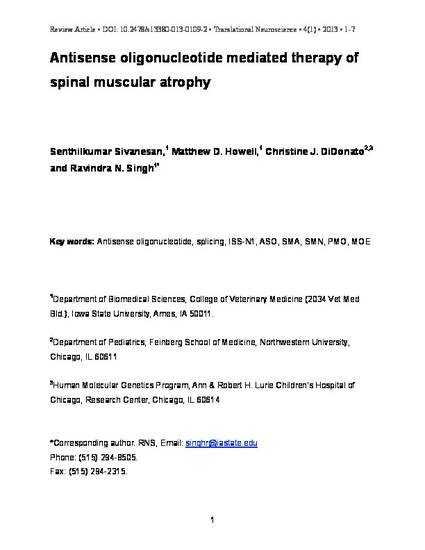
Spinal muscular atrophy (SMA) is the leading genetic cause of infant mortality. SMA results from deletions or mutations of survival motor neuron 1 (SMN1), an essential gene. SMN2, a nearly identical copy, can compensate for SMN1 loss if SMN2 exon 7 skipping is prevented. Among the many cis-elements involved in the splicing regulation of SMN exon 7, intronic splicing silencer N1 (ISS-N1) has emerged as the most effective target for an antisense oligonucleotide (ASO)-mediated splicing correction of SMN2 exon 7. Blocking of ISS-N1 by an ASO has been shown to fully restore SMN2 exon 7 inclusion in SMA patient cells as well as in vivo. Here we review how ISS-N1 targeting ASOs that use different chemistries respond differently in the various SMA mouse models. We also compare other ASO-based strategies for therapeutic splicing correction in SMA. Given that substantial progress on ASO-based strategies to promote SMN2 exon 7 inclusion in SMA has been made, and that similar approaches in a growing number of genetic diseases are possible, this report has wide implications.
Available at: http://works.bepress.com/ravindra-singh/4/

This is a post-print of an article from Translational Neuroscience 4, no. 1 (2013): 1–7, doi:10.2478/s13380-013-0109-2. The original publication is available at www.springerlink.com.